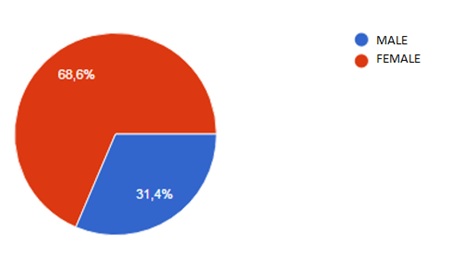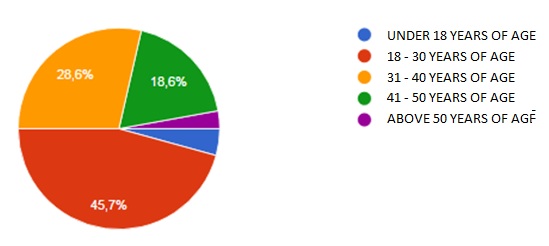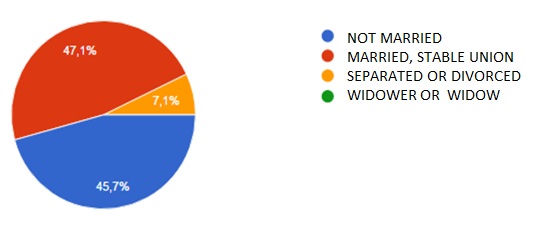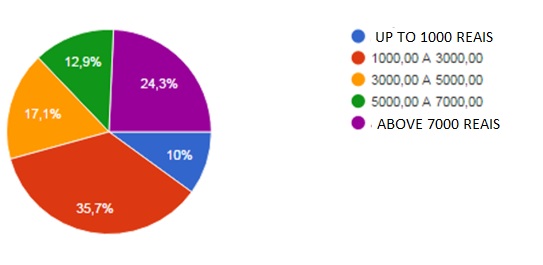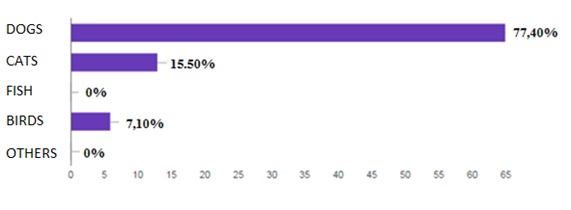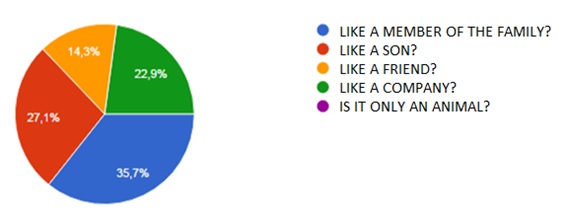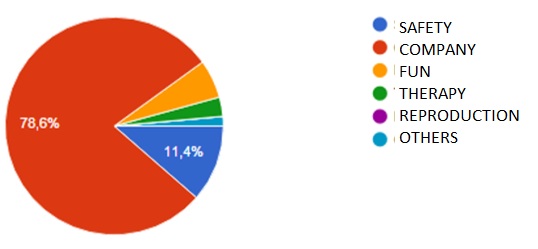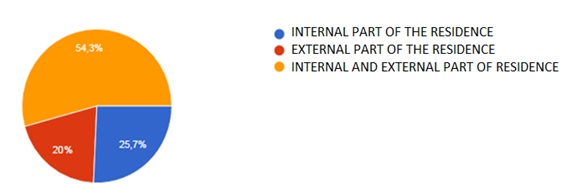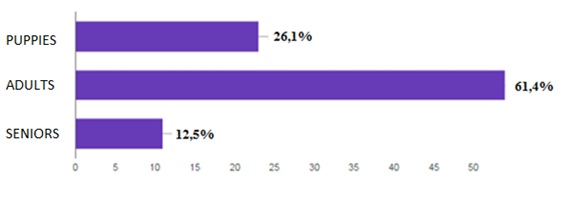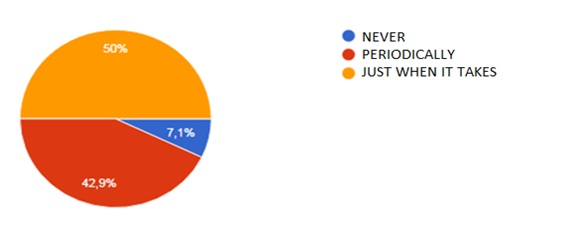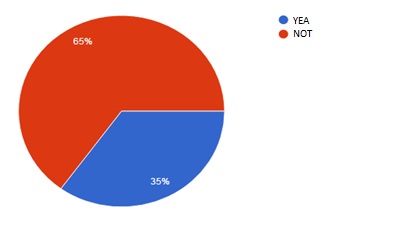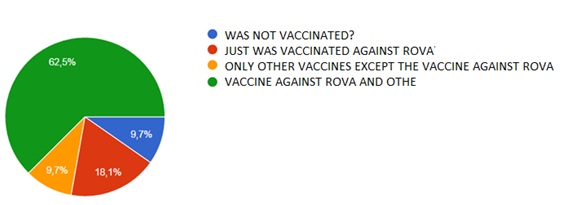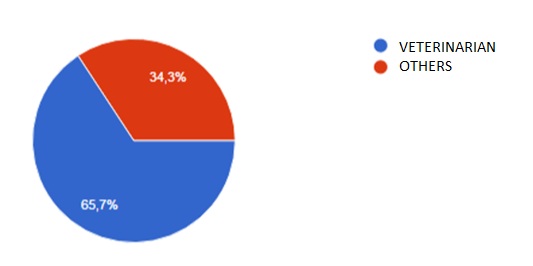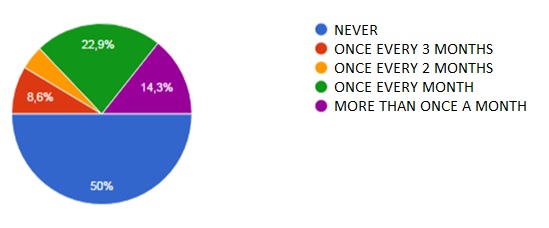ABSTRACT
The study addressed that the positive impact of pets on the health and well-being of humans is well recognized and comprises the psychological, physiological, therapeutic and psychosocial aspects. Function as facilitators in motivation and assisted physical therapy of numerous diseases. In addition, there is recognition as a protective factor against cardiovascular disease and to reduce the stress of its owners: They are psychological support, reduce the feeling of loneliness and allows the interaction of their owners with the social environment that surrounds them. This human-animal relationship involves some zoonotic risks that should be minimized, especially in immunocompromised individuals. This is where the veterinarian and PET companies should play an important role in counseling for responsible pet ownership. In the period from January 4, 2017 to January 20, 2017, an online questionnaire was applied with the purpose of drawing a profile of the owners and their main characteristics of care of these owners with their animals, the questionnaire contained personal information of the owners, information Such as breed, age, sex, size and finally veterinary care as if it was castrated or not, vaccination and information relevant to a healthy animal life. As a result it was found that the veterinarian has a major social commitment to be responsible for controlling and reducing the risks to human health arising from zoological diseases of pets. This requires closer ties with owners so you can have a complete picture of the environment in which the animal develops and reach optimal health conditions in man-animal space.
Keywords
Animals; Nutrition; Pet Ownership; Therapy; Veterinarian
Introduction
The motivation for choosing the theme arose from several factors that have contributed to the increase in the number of pets, such as the need to fill affective spaces in familiar environments, increase the economic capacity of social classes, allowing them to assume costs not previously covered in its budget, and the phenomenon of displacement of rural populations from rural areas, bringing the culture of animal ownership.
Having a house cared for by a dog, monitoring a business, or as a companion for a child or an adult, has become a necessity for many. The IBGE Senso in 2013 indicated that there were 132 million pets and among them are 52.2 million dogs, 37.9 million birds and 22.10 million cats.
According to Dotti [1] there was a marked increase in pets in the cities begins to present coexistence problems, while it requires a review of the interrelations resulting from this situation, its impact on public health and individual health motivated by the impact of factors risk of zoonoses. However, despite the difficulties that can bring this large population of animals it is important to reflect what has led pets to have a great acceptance in human life.
In many countries, such as Sweden, the United States and Australia, the benefits of the pet company and its importance in human life are recognized. In the United States, this recognition has led to laws allowing the residence of a pet for therapeutic purposes in homes, which do not allow pets to stay. In these cases, the animal is not considered a pet, but as a necessary part of the treatment or support of a disabled, as would a wheelchair. A letter of recommendation or prescription from a qualified professional (psychologist, physiiatrist or doctor) is enough to have the right to own an animal as a therapeutic care.
The problem addressed investigates the following question: What impacts on the life of the animal with the neglect of its health? The guiding question of the study investigates the importance of the care of these animals and the importance of the owners to be attentive to the health and the demand of professionals and qualified companies so that it has a more complete and professional accompaniment.
Methodology
For the development of this research were carried out data collection based on the semi-structured interviews model and bibliographic research, aiming to analyze the topic of interest in more depth. This type of interview has as a reference a list of questions that should be answered preferentially in a particular order, but with flexibility [2]. This is useful when not all answers need to be quantified, giving the interviewee the chance to include more details or make associations with other responses.
Because this was a bibliographic study, there was no need to be submitted to the Ethics and Research Committee (CEP) evaluation. However, the intellectual integrity of the authors cited and used in this research was respected. In addition to respecting the principles of copyright, in accordance with Law No. 9.610 / 98, which regulates copyright in Brazil.
Literature Review
Cãohistory of relationships man with the dog
Throughout history the dog has had several functions: Hunter, shepherd, guard, traction, source of heat, saves lives in rescue in wars, for sport and as companion today. In ancient Europe and western Asia was vital as a hunting assistant, arising the first runs according to the hunting of animals or item: Water races, collectors or retriever, showing or pointer of vultures, truffle hunters, etc.
Dogs have also been involved in violent activities such as bullfighting, their purpose was to excite the bull, generating a series of corpulent-looking races, big head, drooping ears and flat nose. They have been fighters and strategic tools in wars: Alexander the Great used these animals to carry the soldiers' weapons; the Romans tied a bronze goblet with fire to cause fires in the enemy camp.
There are medieval engravings that show collars equipped with iron points and steel breastplates to tear the horse's flanks. The dog has been present in the mythology of many cultures, the most famous Cerberus, guardian of the gates of hell, whose mission was not to let anyone out there. Dogs have been present in religion (obtaining intervals of god Anubis, Egyptian god of the dead), painting, sculpture, literature, philately and have been induced to coins.
Dogs in Egypt were respected and it was forbidden to kill, condemning the death penalty for this offense and animal abuse is penaba with corporal punishment. Archaeologists found mummified near the grave of their master dogs, these were not sacrificed at the time of their death, but were mummified and deposited next to the tomb, since it will cease to exist with natural death; they were crying and whining was in their honor.
Dogs were faithful companions of kings, emperors, aristocracy, but also of low-income people, where this is not an impediment to the surrender of their love and loyalty. Fortunately for our faithful companion, these times are far away so grossly; one way to compensate and correct all disagreements, is to give the care and treatment they have gained over time.
The effect of pets (Dogs and Cats)
There are numerous studies that have shown how pets have a positive influence on human health and well-being. Scientific research has classified these effects into four specific areas: Therapeutic, physiological, psychosocial and psychological. There are numerous studies that have shown how pets have a positive influence on human health and well-being. Scientific research has classified these effects into four specific areas: Therapeutic, physiological, psychosocial and psychological.
Therapeutic
Animals as a therapeutic resource can be included in treatments such as inspirational assisted therapy or physical therapy. The first aims to introduce an animal permanently or with a specific regularity in a person's environment in order to allow an affective bond is established. This methodology has been used in patients with Acquired Immunodeficiency Syndrome (AIDS), disease and various psychological disorders such as Alzheimer's syndrome; It was established in homes for the elderly, hospitals and psychiatric institutions. This type of therapy has enhanced rehabilitation of cardiac patients and increased the survival rate of coronary heart disease. Recently, there is a great interest in the effects of the presence of animals as part of the work environment [3].
Thinking of people who have recovered and still have the ability to live independently, international institutions have developed special programs. The widely recognized volunteer organization in the United States is "Pets Are a Wonderful Suppor" (PAWS), where animals are helping people with AIDS. This organization in its 10 years of operation has about 500 clients and collaborates in all the necessary tasks so that the owners can continue with their pets, despite the disease progression [4].
According to BRITO, 2013 [5] physiotherapy is another way to obtain therapeutic effects through animals, the best known form is equine therapy, which began in Europe about 50 years ago and was quickly extended to many countries. This therapy has become a tool to increase physical abilities based on the multidimensional movement of the horse. It improves motor function, muscle tone, posture, balance, coordination and sensorimotor location. It has been used in patients with Down syndrome, cerebral palsy, multiple sclerosis, developmental delay and brain trauma.
The movement of the horse in the pilot performs, a passive and active stretching stimulates the rhythmic balance and constantly move the center of gravity, moves the pelvis, spine and joints in a similar pattern of walking. Deep muscle groups that are not accessible to conventional treatment are stretched and strengthened with the horse's movements. Interacting with a horse provides visual, tactile and olfactory stimulation. In addition, improvements in speech, cognitive functions, language development and help to develop patience, responsibility and emotional control are reported [5].
Physiological
The presence of a pet can modify factors such as cardiovascular disease: High blood pressure, decreased heart rate, anxiety and stress is reduced by isolation and endorphins are released. Dog owners start walking and consequently reflect fewer visits [6].
Psychosocial
According to Mars, 2009 the influence of pets on community life is described as an antidote to human anonymity in public places in today's society, thus fostering interaction between strangers. Owners have greater ease of socialization, for establishing trustful bonds in interpersonal relationships by engaging in community events in parks and other recreational areas with their pet. The sense of reciprocity is one of the fundamental pillars of a community pets become catalysts.
Psychological
According to BECKER, 2003 [3], pets have shown a significant psychological and emotional effect on health-conscious owners, making chronic disease more bearable, and may even become recovery facilitators in some cases. This condition poses a health challenge because it is clear that separating the immunodepressed patient from their pet is counterproductive to the emotional imbalance that would be exposed.
Discussion
The data obtained through a survey of 70 resident pet owners from Cuiabá were analyzed. The objective of this study was to analyze the profile and the care that these interviewees have with their pets.
Graph 1 shows that analyzing the personal characteristics of the group, where from the data obtained it can be seen that 68.6% of the total of 70 people interviewed are female and 31.4% are male.
Graph 2 shows that 45.7% of respondents are in the age range of 18 to 30 years, 28.6% from 31 to 40 years, 18.6% from 41 to 50 years and the remainder are under 18 years or above of 50 years of age.
Graph 3 shows that 47.1% of the respondents are married or in a stable union, 45.7 are single and 7.1% are separated or divorced.
Graph 4 shows that 35.7% of respondents have a family income between R $ 1000.00 and R $ 3000.00, 24.3% above R $ 7000.00, 17.1% between R $ 3000.00 and R $ 5000.00 and 12.9% earn between R $ 5000.00 and 7000.00.
Chart 5 clearly demonstrates the preference for dogs having a total of 77.40% of respondents to this animal in their residence.
Graph 6 shows that 35.7% of the interviewees have a family member, 27.1% have them as a child, 22.9% have a company and 14.3% have them as a friend.
Graph 7 shows that 78.6% of respondents purchased their pet to keep company, 11.40% for other purposes.
Graph 8 shows that 54.3 of the pets live indoors and outdoors, 25.7% indoors and 20% in the outside.
Graph 9 shows that 61.4% of the pets are adults, 26.1% are puppies and 12.5% are elderly.
Graph 10 shows that 64.1% lead to the Veterinarian, 17.9% are looking for an agricultural clerk or a pet shop, and 8.6% medicate on their own.
Graph 11 shows that 50% lead to the Veterinarian only when he becomes ill, 42.9% takes periodically and 7.1% never take the animal to the Veterinarian.
Graph 12 shows that 65.0% of the interviewees' pets are not castrated and 35.0% castrated their animals.
Graph 13 shows that 62.5% were vaccinated against rabies and other diseases and 18.1% only against rabies.
Graph 14 shows that 65.7% were vaccinated by one Veterinarian and 34.3% by another type of professional.
Graph 15 shows that 50% of respondents never took their pets to the bath or cunt, 22.9% take 1x per month, 14.3% more than once a month and the remainder every 2 or 3 months.
Conclusion
The Veterinarian is the professional called to actively participate in the intricate relationship between the owner and the pet. Your involvement should involve clinical aspects, nutrition, and education for homeowners on how to handle the pet. Responsible pet ownership includes proper feeding, vaccination, worming and deworming as management plans, availability of time to walk with the animal, daily grooming and animal recreation activities. Finally, it should be noted how the many positive aspects of pet ownership outweigh the negative, as would be the damage done to the goods, bites and time they require.
Additional should guide future owners in the acquisition of pets, analyzing various aspects to ensure the most appropriate, this being a relationship that should last as long as the life of the animal. Thus, the Veterinarian should advise the type of pet and breed appropriate to each family according to the specific characteristics of this family: Type of housing, number of members, age, lifestyle, economic capacity to meet basic needs of the pet, possible activities that (surveillance, breeding company in athletic activities, hunting, etc.) will be submitted.
The Veterinarian has a major social commitment to be responsible for the control and reduction of risks to human health due to zoonotic diseases of pets. This requires closer ties with owners so that you can have a complete view of the environment in which the animal develops and achieve optimal health conditions in man-animal space.
There is a large field of research on breeding animals of company, could create breeding programs of generation free of congenital descending diseases. Also, get puppies with a certain behavior to specific training programs.
Figures
Graph 1:Sex of interviewees.
Graph 2: Age Group of Interviewees.
Graph 3: Civil Status of Interviewees.
Graph 4: Family Income of Interviewees.
Graph 5: Type of Pet.
Graph 6: How do you consider your pet?
Graph 7: Reason for the acquisition of the pet.
Graph 8: Place where the pet lives.
Graph 9: Pet's Age.
Graph 10: When is your pet ill where you are looking for a solution?
Graph 11: How often do you take the pet to the Veterinarian?
Graph 12: Is the pet castrated?
Graph 13: Was the pet vaccinated in the last year?
Graph 14: Which professional applies the vaccine?
Graph 15: How often is your pet taken to the toilet and cough?


